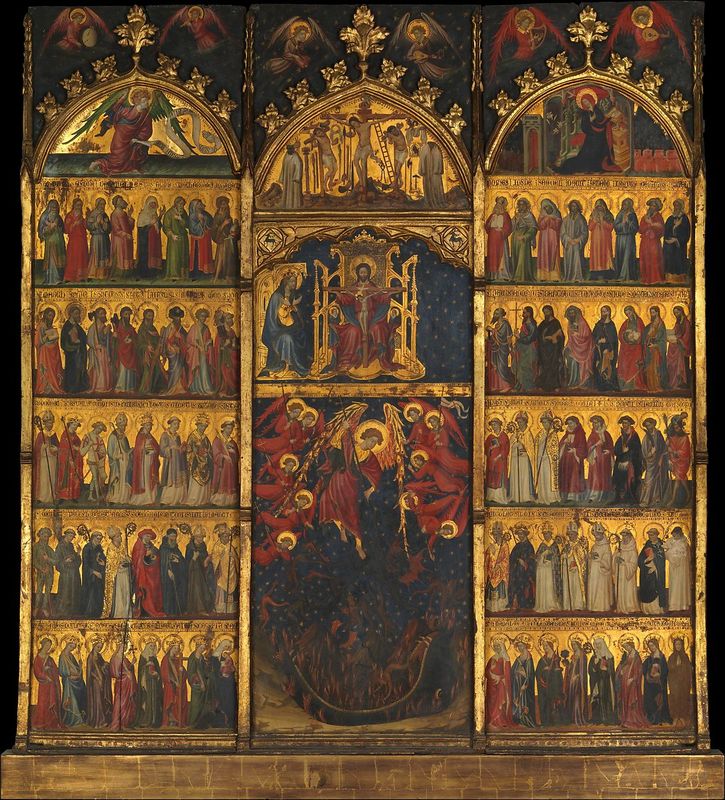Introduction
The Personal Resonance of the Cult of Saints focuses on the cult that developed around Catholic Saints in the medieval period. It examines how this shift in the church towards venerating saints occurred, as well as what specific changes came about because of it, such as the existence of relics and reliquaries or the festivals of saints. Saints became very personal beings for common religious practitioners due to their status as lesser divine beings. A major theme in this exhibit's pages and objects is the idea that saints are not as big or overwhelming as God is and are easier to relate to when it comes to matters that are more mundane. The many relics within the exhibit, sourced from all over Europe from 400 CE to 1575 CE, demonstrate this. Physical objects such as the Bust of the Virgin or the Arm Reliquary present physical reminders of men and women who lived according to the same faith and principles as medieval practitioners. The objects that the cult of saints rallied around are a grounding example of the divine in a fallen world, and this attitude towards such objects can be seen in the meticulous effort put into them and their exceptional designs. They can often function even as mediators, most of them being humans themselves who have achieved some sort of divine state of being in the afterlife. At the core of the exhibit is the history of saintly veneration and the reasons why it became such a major part of medieval practice, namely this aspect of relatability and a sense of familiarity. This exhibit was curated and written by Emily Morgan.
The cult of saints was a development in early Christian communities in which people, oftentimes martyrs or folk heroes, were venerated and looked up to as holy beings greater than the common man. Beginning in the third century and through the Protestant Reformation, the veneration of saints and the many religious practices associated with it was a major element of religious experience and community in the Christian church. In many cases, the people held up as saints were exceptional examples of the Christian faith and promoted as the ideal that a layperson could strive to be.
The emergence of saints as prominent figures in Christian theology came out of the desire in communities for mediators and lesser diving beings to which one could relate on a personal level. The cosmology of the early Christian and Jewish communities included the separation of the divine and the created, leading to a distant and impersonal understanding of God. The saints presented an opportunity for the common people to connect with the idea of the divine on a smaller scale. The earliest saints included the apostles as well as Mary and John, the parents of Jesus Christ, well known figures whose familiarity presented an aspect of reliability and human experience. As more saints were established, they became patrons of various aspects of life, professions, and geographical areas. Saints were an opportunity for people to approach that which was holy and unknown through prayer and intercession.
Many practices became associated with saints and saintly veneration as the cult of saints grew to encompass the majority of the early Christian church. The importance of relics, and subsequently, reliquaries is one of the most prominent. Relics were believed to be pieces of a saint's body or objects which were close to them in life or death that possessed spiritual and supernatural power. These objects were then placed in reliquaries, which began as crude containers and developed to be extravagant and detailed works of art in themselves. Relics were classified by the Catholic church as first class, second class, or third class. The designation of first class is given to the actual physical remains of a saint. These relics were the most important, and could take the form of a saints bone or hair. Second class relics were items that were frequently used within a saint's life, such as their clothing or an object of religious importance like a rosary. Third class relics are objects which have been in contact with first or second class ones. The intercession of saints, as well as shrines dedicated to them are also elements of the cult of saints that played a major part of this era of the church.
The cult of saints is an example of a religious innovation which can drastically alter the course of a religious tradition, stemming from an emotional component of desiring a personal connection with the divine. Throughout the middle ages, saints became an integral part of understanding Christian practice and life. The saints resonated with people in a way that the idea of God and lofty theological concepts did not, allowing many to connect with the Christian faith on a personal level.

